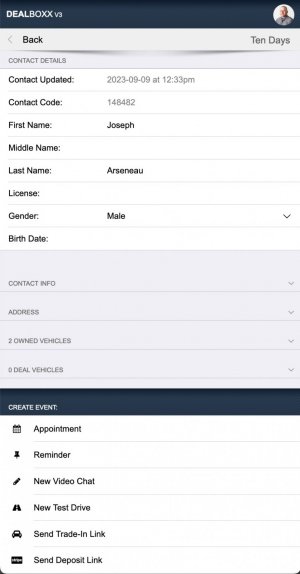- Apr 3, 2014
- 81
- 40
- Awards
- 4
- First Name
- J.D.
Last week, Twilio wrote a letter to their company. (from SEC filing)
One way or another, trends among the underlying tech suppliers for SaaS come into play for this community.
Live Video
With a small footnote in this letter, Twilio confirmed End of Life (EOL) of their Programmable Video offering. For some, this wont be missed. For others, this a seismic shift for core products built around 1:1, group, or large broadcast video.
If you use live video chat through a software platform at your dealership, that platform may now have some decisions to make.
If you have any sort of live video use case you plan to embed in your app in the future, it will not happen on Twilio.
No, Vonage did not get the nod for Twilio's migration guide on video. It shouldn't. Vonage Video API (formerly Tokbox Opentok) is one the of most mature and innovative WebRTC offerings on the market. Strategically, it likely wouldn't be smart for Twilio to send customers to a leading competitor that can also go head-to-head on their focus in SMS/Voice.
Call to Action
What is the sentiment here related using live video in Automotive? (example 1:1 video chat)
Does a 33% workforce reduction in a "year of many changes" raise another conversation about business continuity?
One way or another, trends among the underlying tech suppliers for SaaS come into play for this community.
Live Video
With a small footnote in this letter, Twilio confirmed End of Life (EOL) of their Programmable Video offering. For some, this wont be missed. For others, this a seismic shift for core products built around 1:1, group, or large broadcast video.
If you use live video chat through a software platform at your dealership, that platform may now have some decisions to make.
If you have any sort of live video use case you plan to embed in your app in the future, it will not happen on Twilio.
No, Vonage did not get the nod for Twilio's migration guide on video. It shouldn't. Vonage Video API (formerly Tokbox Opentok) is one the of most mature and innovative WebRTC offerings on the market. Strategically, it likely wouldn't be smart for Twilio to send customers to a leading competitor that can also go head-to-head on their focus in SMS/Voice.
Call to Action
What is the sentiment here related using live video in Automotive? (example 1:1 video chat)
Does a 33% workforce reduction in a "year of many changes" raise another conversation about business continuity?








